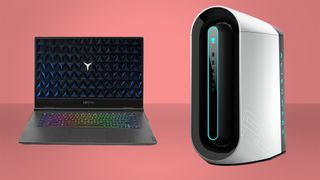These inverted solar panels can generate power from almost any heat source
That includes you—but will probably be other, much hotter things.

Generating renewable power has got to be one of the coolest things we do as a species. Finding ways to draw endless power from what's already going on naturally around us is the biggest of big-brain stuff. Solar is one of the more common ways of generating renewable power, especially for regular consumers. Many residential houses have solar panels of their own, and you can even buy panels for camping and other activities relatively cheap nowadays.
Living in Australia, I'm endlessly in awe of my own solar panels and gleefully watch them diminish and sometimes completely obliterate my power bill in summer. Still, solar power has come under criticism by some, and one of the complaints I often hear is that it doesn't work at night. It can be a moot point with batteries and other renewable sources working in tandem, but is still technically true.
Well, I'd like to introduce you all to these weird solar panels, which actually do work at night.
As told by New Atlas, a team at the University of New South Wales has been able to generate power from what is essentially an inverted solar cell, at night. The way it works is by using the infrared light that the Earth radiates at night, after a hard day of absorbing all that sweet, sweet solar energy.

Best gaming PC: The top pre-built machines from the pros
Best gaming laptop: Perfect notebooks for mobile gaming
The researchers used a device called a thermoradiative diode, which absorbs the energy radiating out of a heat source, like the Earth, to somewhere colder, like the cool night air, and turns the difference between the two into potential electricity.
In theory, these inverted solar panels can be used to gather energy from basically anything that emits light. Any time heat transfers from a warm place to a cold one, which is basically all the time according to thermodynamics. The downside is it really isn't a lot of power—yet.
This is the first time energy absorbed this way has even made its way up to measurable amounts, and that measurement is very small, though the team believes it will be possible to generate around 1/10th the power a solar cell gets from the sun in time. That doesn't sound like much, but given it could be generating power from just about anything, could really add up.
The biggest gaming news, reviews and hardware deals
Keep up to date with the most important stories and the best deals, as picked by the PC Gamer team.
Thinking about all the ways this could idly be generating power is proof of the possibilities. Harnessing the heat given off by industrial waste, mass transport, or even just for devices powered by your own body heat. It may even power your computer with enough of these Windows 11 updates to help your PC prioritise renewable energy, or you could always go with an algae-powered PC instead. While the tech may be a while coming, it's still an exciting proposition for the future of renewable energy.

Hope’s been writing about games for about a decade, starting out way back when on the Australian Nintendo fan site Vooks.net. Since then, she’s talked far too much about games and tech for publications such as Techlife, Byteside, IGN, and GameSpot. Of course there’s also here at PC Gamer, where she gets to indulge her inner hardware nerd with news and reviews. You can usually find Hope fawning over some art, tech, or likely a wonderful combination of them both and where relevant she’ll share them with you here. When she’s not writing about the amazing creations of others, she’s working on what she hopes will one day be her own. You can find her fictional chill out ambient far future sci-fi radio show/album/listening experience podcast right here. No, she’s not kidding.
Most Popular







